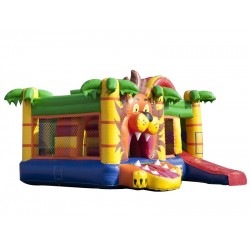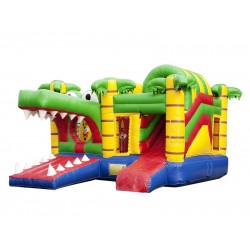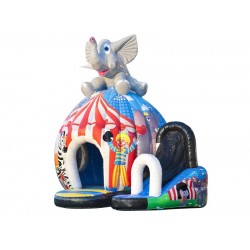Bouncy Castles and Water: How Rain Affects Inflatable Fun

Bouncy castles are a favorite at outdoor events and parties, providing hours of entertainment for children. However, their performance and safety can be significantly impacted by rain and moisture. Understanding how water affects these inflatables is crucial for maintaining their condition and ensuring a safe environment for play. This article explores the effects of rain on bouncy castles and offers tips for managing these challenges.
Impact of Rain on Bouncy Castles
Rain and moisture can have several negative effects on bouncy castles:
- Structural Integrity: Water can weaken the material of a bouncy castle, making it more susceptible to tears and damage. Prolonged exposure to moisture can compromise the inflatable's structural integrity.
- Slippery Surfaces: Wet surfaces can become dangerously slippery, increasing the risk of falls and injuries. This is particularly concerning for children who are jumping and playing vigorously.
- Increased Wear and Tear: Continuous exposure to water can accelerate the wear and tear on the fabric, leading to quicker deterioration and the need for more frequent repairs.
- Mold and Mildew: Leftover moisture can promote the growth of mold and mildew, which not only affects the appearance of the bouncy castle but can also pose health risks.
Managing Rain and Moisture
To mitigate the effects of rain and moisture, consider the following strategies:
- Monitor Weather Conditions: Always check the weather forecast before setting up a bouncy castle. Avoid using it during or immediately after rain to prevent potential damage.
- Use a Cover: If possible, set up a cover or tent over the bouncy castle to protect it from rain. Ensure that the cover is securely fastened and does not obstruct ventilation.
- Dry Thoroughly: After exposure to rain, thoroughly dry the bouncy castle before storing it. This helps prevent mold and mildew growth and maintains the integrity of the fabric.
- Regular Inspections: Conduct regular inspections of the bouncy castle for any signs of damage or wear caused by moisture. Address any issues promptly to prevent further deterioration.
- Proper Storage: Store the bouncy castle in a dry, well-ventilated area when not in use. Ensure it is completely dry before folding and storing it to avoid moisture-related problems.
Conclusion
While bouncy castles provide fantastic entertainment, they are sensitive to environmental conditions such as rain. By understanding how moisture affects these inflatables and implementing strategies to manage and mitigate these effects, you can ensure that your bouncy castle remains in good condition and continues to provide safe, enjoyable fun. Proper care and maintenance are key to prolonging the life of your bouncy castle and ensuring a positive experience for all users.




Leave a Comment